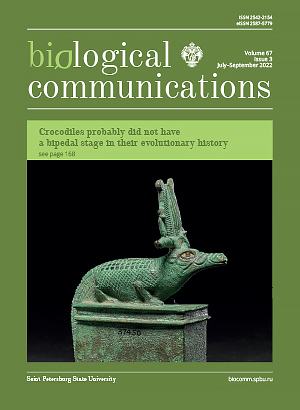Agar-based polyethylene glycol (PEG) infusion model for pea (Pisum sativum L.) — perspectives of translation to legume crop plants
DOI:
https://doi.org/10.21638/spbu03.2022.309Abstract
Due to the oncoming climate changes water deficit represents one of the most important abiotic stressors which dramatically affects crop productivity worldwide. Because of their importance as the principal source of food protein, legumes attract a special interest of plant scientists. Moreover, legumes are involved in symbiotic association with rhizobial bacteria, which is morphologically localized to root nodules. These structures are critical for fixation of atmospheric nitrogen and highly sensitive to drought. Therefore, new drought-tolerant legume cultivars need to be developed to meet the growing food demand. However, this requires a comprehensive knowledge of the molecular mechanisms behind the plant stress response. To access these mechanisms, adequate and reliable drought stress models need to be established. The agar-based polyethylene glycol (PEG) infusion model allows a physiologically relevant reduction of soil water potential (Ψw), although it is restricted to seedlings and does not give access to proteomics and metabolomics studies. Earlier, we successfully overcame this limitation and optimized this model for mature Arabidopsis plants. Here we make the next step forward and address its application to one of the major crop legumes — pea. Using a broad panel of physiological and biochemical markers, we comprehensively prove the applicability of this setup to legumes. The patterns of drought-related physiological changes are well-interpretable and generally resemble the stress response of plants grown in soil-based stop-watering models. Thus, the proposed model can be efficiently used in the study of stress-related metabolic adjustment in green parts, roots and root nodules of juvenile and flowering plants.
Keywords:
agar-based PEG infusion model, biochemical stress markers, drought, osmotic stress, oxidative stress, physiological stress markers, polyethylene glycol (PEG)
Downloads
References
Downloads
Published
How to Cite
License
Articles of Biological Communications are open access distributed under the terms of the License Agreement with Saint Petersburg State University, which permits to the authors unrestricted distribution and self-archiving free of charge.





